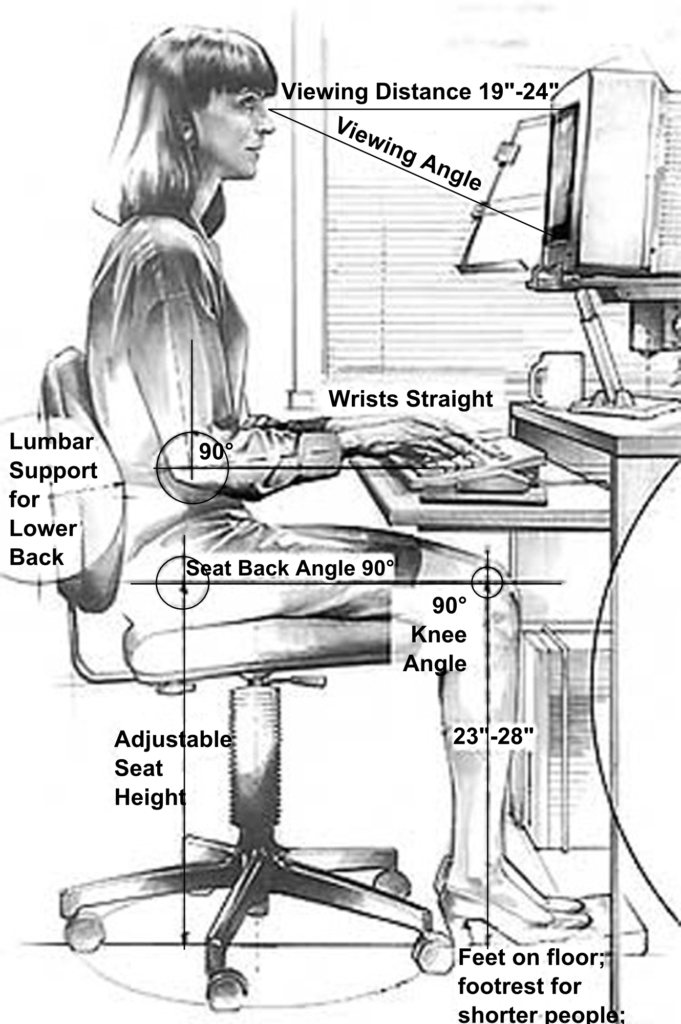
If you spend most of your day sitting in an office chair, it’s important to make sure it’s adjusted properly to avoid long-term health problems. An ill-fitting chair can contribute to back, neck and shoulder problems, which can affect your productivity and overall well-being. In this article, we’ll explore five tips for properly adjusting your office chair.
Adjust the seat height.
Seat height is one of the most important adjustments you should make to your office chair. When you sit down, your feet should be flat on the floor and your knees should be at the same level or slightly lower than your hips. If your feet cannot touch the floor, you can adjust the seat height to suit your height.
To do this, adjust the lever under the seat to raise or lower the height. Make sure the seat is level and that your knees are not pressed against the underside of the desk.
Adjust the seat depth.
Seat depth refers to the distance between the front of the seat and the backrest. Make sure the seat depth is appropriate for your body. When you are seated, you should have enough space between the seat and the back of your knees.
If the seat depth is too short, your thighs will not have enough support and you may experience back pain. If the seat depth is too deep, you may feel uncomfortable and have to sit on the edge of the seat.
To adjust the seat depth, look for a lever under the seat that allows you to adjust the depth.
Adjust the height of the armrest.
Armrests can be a great support for your arms and shoulders if adjusted correctly. The armrest height should be such that your elbows are at a 90-degree angle and your shoulders are relaxed.
If the armrests are too high, your shoulders can lift and strain, which can contribute to neck and shoulder pain. If they are too low, your arms may feel tense and tired.
Lumbar support is important for maintaining proper posture and avoiding back pain. Most office chairs have an adjustable lumbar support that you can move up or down to adjust the height of the lumbar support.
Adjust the backrest tilt.
Backrest tilt is another important factor to consider when adjusting your office chair. The tilt should be such that your back is in a comfortable, relaxed position.
If the backrest tilt is too upright, you may feel uncomfortable and have circulation problems. If the tilt is too steep, you may feel too relaxed and have posture problems.
To adjust the backrest tilt, look for a lever under the seat that allows you to tilt forward or backward.
Adjust the lumbar support.
To fit the natural curvature of your lower back. If the lumbar support is too high, it can put pressure on your upper back and cause pain. If it is too low, you will not have enough support and may feel pain in your lower back.
To adjust the lumbar support, look for a lever under the seat that allows you to raise or lower the lumbar support.

Properly adjusting your office chair is essential to maintaining good posture and avoiding long-term back pain. By following these five tips, you can easily adjust your office chair to fit your body and improve your overall well-being at work.
Remember, not all office chairs are the same, so it’s important to take the time to adjust yours correctly. If you are having trouble adjusting your office chair, consider consulting an ergonomics specialist for advice on how to make the proper adjustments.
In summary, to properly adjust your office chair, you should adjust the seat height, seat depth, armrest height, backrest tilt and lumbar support. By following these five tips, you can ensure that your office chair is adjusted correctly and avoid health problems related to posture and ergonomics.
